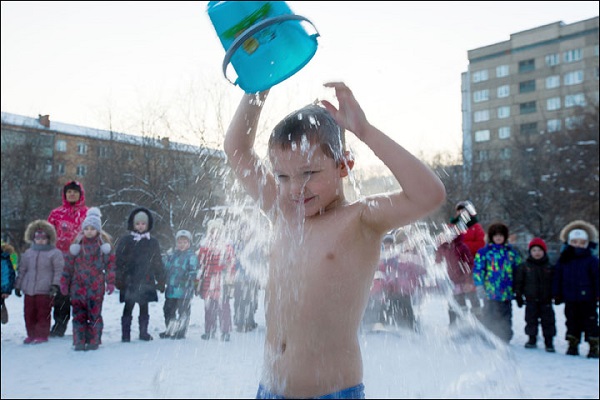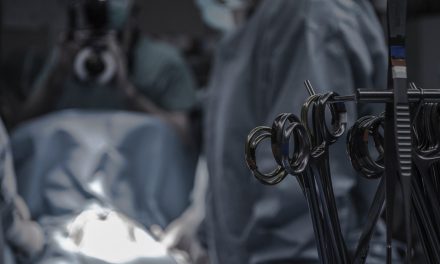(Editor’s Note: This story is from 2016 but it’s so good that we had to share it with you!)
Swimming and being exposed to ice-cold temperatures for health and stimulating the immune system was made globally known by Dutch Guinness World Record holder Wim Hof, also known as the Iceman.
RELATED STORY:
The Wim Hof Method (WHM) now teaches ordinary participants to use special breathing techniques and willpower to train the body to withstand the cold air and water temperatures and by doing so, they potentially help to restore health from any disease, from arthritis and anxiety to MS and cancer.
Another man, who lived in the previous century, Russian Porfiry Ivanov, was also a proponent of ice swimming and cold water therapies, as he allegedly defeated his own cancer with this method.
Both Porfiry’s method and WHM fall under the same concept as contrast showers – taking ice cold and hot showers every morning to stimulate the immune system and keep the body in top health. They may be the extreme versions of cold therapies but are not brand new.
A popular video online shows that hot and cold therapy (cryotherapy) is used in a Russian kindergarten every morning, and children ages 3-7 participate willingly, and many very enthusiastically.In state kindergarten #317 of Krasnoyarsk, Russia, called Sibiryachok (Little Siberian), an ordinary morning starts with this health ritual – “ice showers,” reported Siberian Times. The practice is so popular that even the children who are not a part of this kindergarten come in the morning just for the showers.
Ice showers take place at 8 a.m. as long as the air temperature is above minus 25 C or minus 13 F degrees. But this year the kindergarten made an exception while the temperature was minus 30 C (minus 22 F) for the Epiphany Day, a Christian holiday. Children and their parents could also take part.
First, everyone warms up inside in a steam sauna. Then wearing only swimsuits or underwear, they run outside wearing flip flops or even barefoot on the snow. Some choose to run around a little. Outside stands a row of buckets with ice water. Children line up to take a bucket and pour ice cold water over the head or on the chest.
“The children really enjoy their showers. They line up to tell how much they like it. The younger kids run faster and scream louder. The older ones walk as if they are on a red carpet as if it’s not cold. Some don’t shower outdoors, and instead do it indoors,” said swimming coach and teacher Oksana Kabotko.
The kindergarten needs to receive parental approval papers signed at the beginning of the academic year for the kids to be able to participate. When the program starts in September about 70 out of 150 children participate. As the weather gets colder towards December about 35 are left.
In September the temperature of the water in the bucket can be as warm as 30 C (86 F) then decreased gradually every day until it reaches ice-cold in the middle of winter.
The number of participants is pretty high, because these programs were very popular in the 1990s, and ice bathing is still an activity that everyone in Russia has heard about. Traditionally, Russians bathe in ice pools during this holiday, regardless of the temperature outside. Ice pools are supposed to be a great stress-relieving therapy, and they are said to protect the body from cold and the flu.Having a healthy body is the main reason people participate in ice therapies. Children are no different. There are few children that are not recommended this therapy as their pediatricians would tell them, but most kids benefit from it.
For Siberian doctors, using ice cold showers for health benefits is a medical fact.
Dr. V. Kharitonov tested blood samples of students before and after pouring ice-cold water on their heads in a 1997 study. He found statistically significant changes at the cellular level of the immune system.
RELATED STORY:
Another proponent of this activity is kindergarten director Olesya Osintseva of Barnaul, Russia.
Kindergarten workers say that children who take cold showers recover from winter illness in just a few days if they get sick at all. Meanwhile, children who do not participate may spend up to 2 weeks in bed when sick.
Flu season is the reason the kindergarten in Barnaul began implementing cold showers.
“[Children] were catching influenzas, and there were moments when half of the children attending the kindergarten were unwell. It was obvious that something needed to be done to make them grow stronger and be more resilient against viruses. This is how we came to the idea of boosting their immunity up by doing this exercise with buckets of chilly water outside in the cold,” said Olesya Osintseva.
“We tested it on ourselves and our own children first, when both adults and children were first going out and splashing their feet with water, and in some months pouring cold water bucket over our heads. What six months of these water exercises showed was an immediately stronger resistance to illnesses. Our kids were now able to go to the kindergarten and even if someone had infection, they were no longer catching it.”
The benefits go beyond physical health. Cold therapies also do wonders for emotional health. Children who take part in daily ice showers are more optimistic and emotionally-mature said the kindergarten workers.
But the main benefit remains to be protection from the flu.
“…Facts are hard to argue with. Our doctor confirms that children in groups that practice dousing get through the flu season a lot more easily, and generally the statistics show there are 95% of healthy children in the ‘wet’ group, compared to 75% among the others,” said teacher Lyubov Daniltsova.
Check out the video below to learn more (it’s been viewed more than 28 million times):












